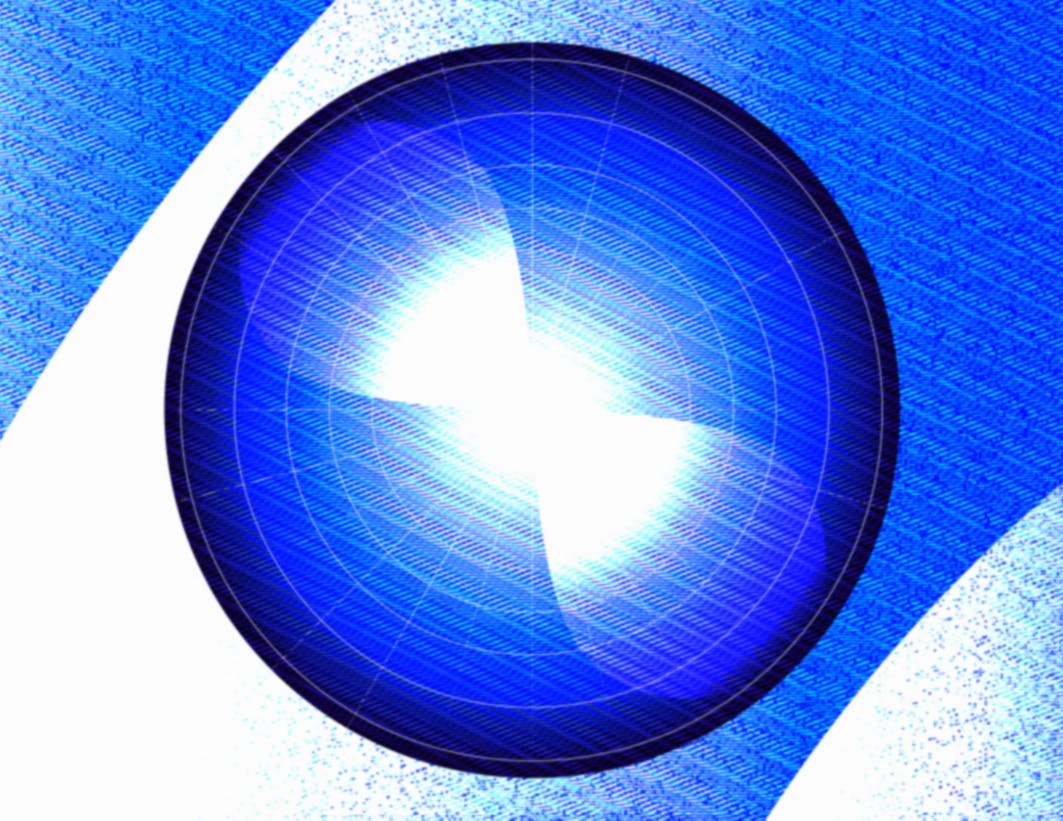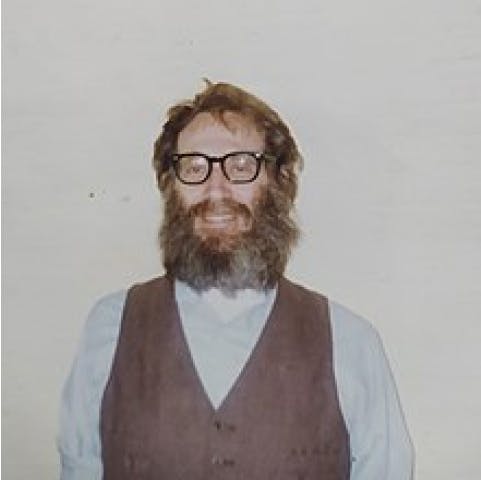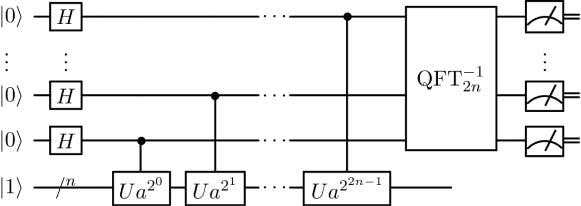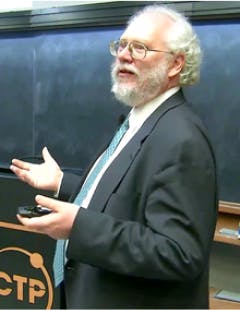Welcome to Quantum 101, your guide to the pivotal milestones and concepts shaping this field. From early 20th-century theories to today's innovations, explore the evolution of quantum computing. Delve into qubits, entanglement, and superposition with our timeline and glossary, simplifying the complexities of quantum computing.
Key terms

Electron Orbital Illustration
The Dawn of Quantum Mechanics
Quantum Mechanics, a branch of physics that delves into the behavior of the smallest particles in the universe, began its journey in the late 19th Century. This marked the start of a field that would eventually lead to the concept of quantum computing.
The 1960s: The Genesis of Quantum Money
1969: Stephen Wiesner invents the idea of quantum money where currency is issued with qubits stored in complementary bases and made counterfeit proof by virtue of the no-cloning theorem.

Stephen Wiesner in 1988
Credit: International Centre for Theoretical Physics. CC BY 3.0 DEED
The 1990s: Algorithms and Theoretical Breakthroughs
1994: A groundbreaking year, as Peter Shor presents an algorithm capable of efficiently factoring large numbers. Known as Shor’s algorithm, this poses a theoretical threat to the foundations of modern encryption.
1995: Peter Shor provides a quantum error correction code for correcting an arbitrary single qubit error.
1996: Dorit Aharonov and Michael Ben-Or (and independently Manny Knill, Raymond Laflamme, and Wojciech Zurek) propose a way to perform fault tolerant quantum computation which allows for arbitrary long quantum computation when the physical error rate is below a threshold value.
1996: Lov Grover introduces an algorithm designed for quantum computers that significantly improves the efficiency of searching databases, later named Grover’s search algorithm.
1996: Seth Lloyd proposes a quantum algorithm for simulating quantum-mechanical systems, expanding the potential applications of quantum computing.

Quantum subroutine in Shor's algorithm
Credit: Bender2k14. CC BY-SA 4.0

Peter Shor in 2017, International Centre for Theoretical Physics
Credit: Hazihazi. CC BY-SA 4.0
The Late 1990s and Early 2000s: Towards Realization
1999: The founding of D-Wave Systems by Geordie Rose marks a pivotal step towards commercial quantum computing.
2000: Eddie Farhi at MIT introduces the concept of adiabatic quantum computing, further diversifying the approaches to quantum computation.
2001: IBM and Stanford University collaborate to successfully implement Shor’s algorithm on a 7-qubit processor, factoring 15 into its prime factors.
2010s: The First Commercial Quantum Processors Go Mainstream
2010: D-Wave One, the first commercial quantum annealer, is released, signifying a major leap from theory to practice.
2016: IBM makes a historic move by making quantum computing accessible on the IBM Cloud, opening up new possibilities for research and development.
The Late 2010s: A Quantum Leap
2019: Google claims to have achieved quantum supremacy, a term coined by John Preskill in 2012, to describe the point at which quantum computers can perform tasks that surpass the capabilities of classical computers.
Today: The Quantum Present
As of today, quantum computers are often likened to the early days of classical computing, analogous to the vacuum tube era. We stand at the threshold of developing useful and scalable quantum computers, poised to unlock unimaginable computational potential.
All-to-all connectivity
A characteristic of trapped ion quantum computers allowing all qubits to be rearranged via ion transport for operations with other qubits, enhancing system efficiency, fidelity, and reducing noise.
Bit flips and phase flips
Common errors in quantum computing where a qubit's state (bit flip) or phase (phase flip) inadvertently switches, leading to decoherence. Quantum error correction is essential to manage these errors.
Bloch Sphere
A geometrical representation of a qubit’s state, where the spherical coordinates indicate the quantum information as a degree of superposition between 0 and 1.
Break-even
A point in quantum error correction where applying the correction improves the accuracy of quantum computations, as opposed to exacerbating physical errors.
Circuit
In quantum computing, a sequence of operations (gates, measurements, resets) performed on qubits, sometimes conditioned on real-time classical computation.
Circuit depth
Represents the longest path in a quantum circuit from data input to output, indicating the maximum number of gates executed on a single qubit.
Coherence
Refers to qubits maintaining the quantum state necessary for completing calculations. Longer coherence is crucial for complex computations.
Eigensolver
An algorithm for calculating eigenvalues or eigenvectors, with the Variational Quantum Eigensolver (VQE) being notable for its use in current quantum computers.
Entanglement
A quantum phenomenon where particles like qubits become interconnected over distances, sharing a quantum state crucial for quantum computations.
Error-Correcting Codes
Common errors in quantum computing where a qubit's state (bit flip) or phase (phase flip) inadvertently switches, leading to decoherence. Quantum error correction is essential to manage these errors.
Fault-tolerant computing
A design principle in quantum computing that prevents errors from corrupting entire systems and circuits.
Fidelity
The accuracy of quantum computations, measured by the success rate of state manipulations (bit-flips) on qubits.
Gates
Basic building blocks of quantum computers, operations on qubits that alter their state. Quantum gates are reversible and often operate on one or two qubits.
Logical qubit
A collection of entangled physical qubits distributing, storing, and protecting quantum information to mitigate errors.
Magic state
A resource state enabling quantum computers to perform faster than classical computers, completing the quantum universal gate set.
Measurement
The process of observing a qubit's quantum state, which causes the state to collapse to a definitive 0 or 1, following the probability defined by its state.
Mid-circuit measurement
Allows selective measurement of qubits at points other than the end of a quantum circuit, retaining quantum states in non-measured qubits.
NISQ (Noisy Intermediate-Scale Quantum Computing)
Refers to the current phase of quantum computing, where full quantum error correction cycles are not yet applied.
Noise
Interference in quantum bits (qubits) due to interactions with their environment or each other, leading to errors and decoherence.
Quantum Annealer
A type of quantum computer optimized for solving optimization problems through adiabatic quantum algorithms.
Quantum Approximate Optimization Algorithm (QAOA)
A quantum algorithm for solving combinatorial optimization problems, suitable for use on NISQ devices.
Quantum charged coupled device (QCCD)
A proposed quantum computer architecture using movable ions as qubits, akin to charge-coupled devices in cameras.
Quantum compiler
Translates quantum circuit language into instructions executable on a quantum computer, especially vital for trapped ion devices.
Quantum error correction
Processes for correcting errors in quantum computers during circuit operations, assembling multiple physical qubits into a logical qubit.
Quantum error correction cycle
A multi-step process to detect and correct errors during quantum computations, essential for maintaining the accuracy of circuit outputs.
Quantum volume
A performance benchmark for quantum computers, considering factors like the number of operations, fidelity, and qubit connectivity.
Qubit
The fundamental unit of quantum information in quantum computing, capable of existing in multiple states simultaneously due to superposition.
Qubit reuse
A feature allowing the measurement and reset of qubits for further computations in a quantum circuit, enabling error correction and more efficient circuit design.
State preparation and measurement (SPAM)
The process of setting qubits in a desired quantum state for an algorithm and then measuring them to retrieve the solution.
Superposition
A unique quantum mechanic feature where qubits can exist in multiple states (both 0 and 1) simultaneously.
Trapped-ion technology
A quantum computing approach using electromagnetic fields to trap charged ions (atoms) for information processing.
Universal gate set
The minimum set of instructions a computer (classical or quantum) needs to perform any given algorithm.
Variational Quantum Algorithm
A hybrid quantum-classical method using quantum circuits and classical optimization to solve problems on current quantum devices.
Zones
Specific areas in a QCCD architecture where quantum operations occur or where qubits are stored or loaded.